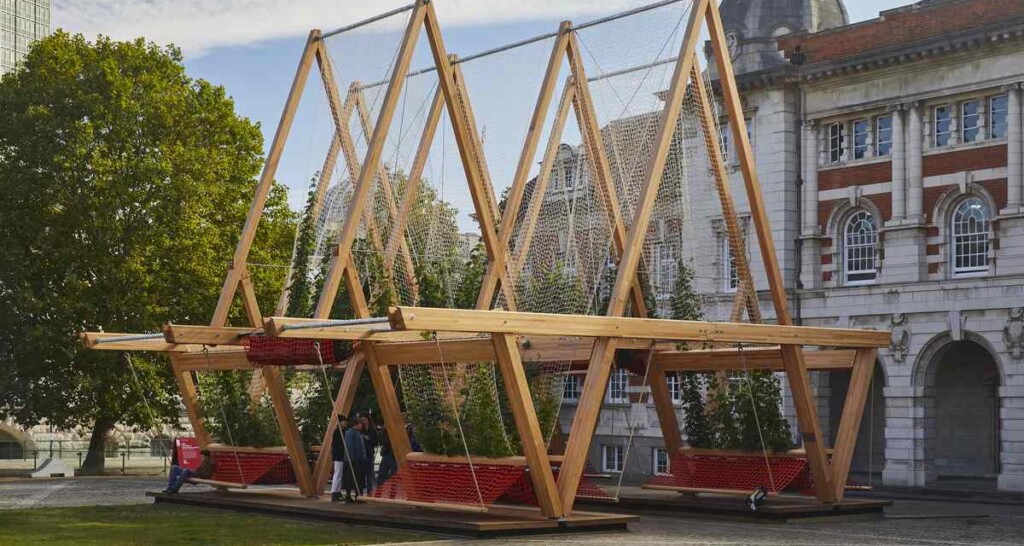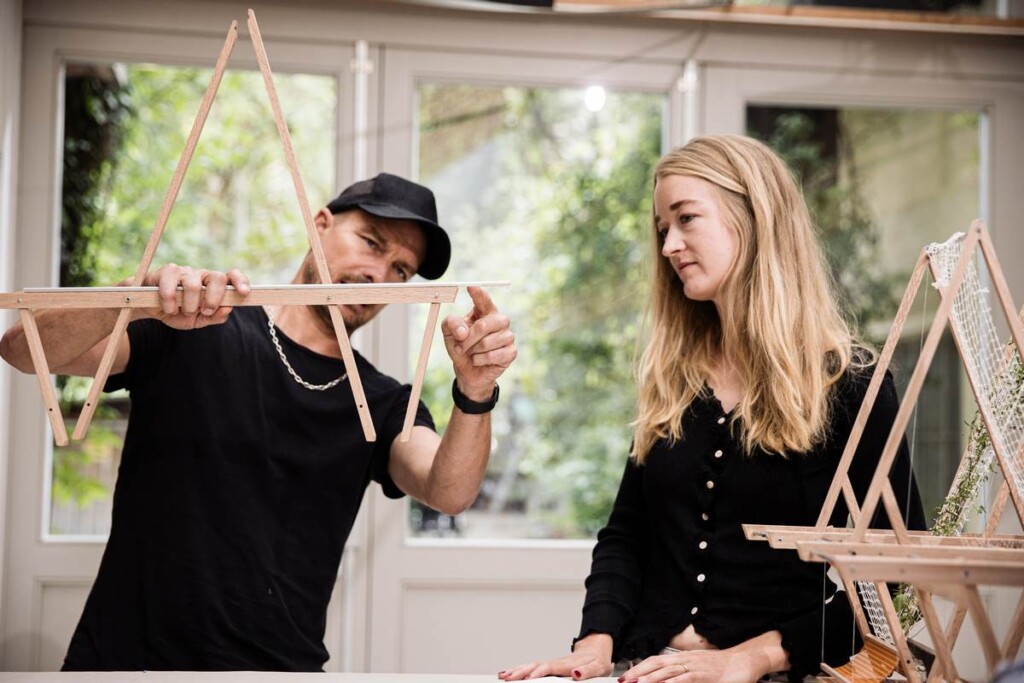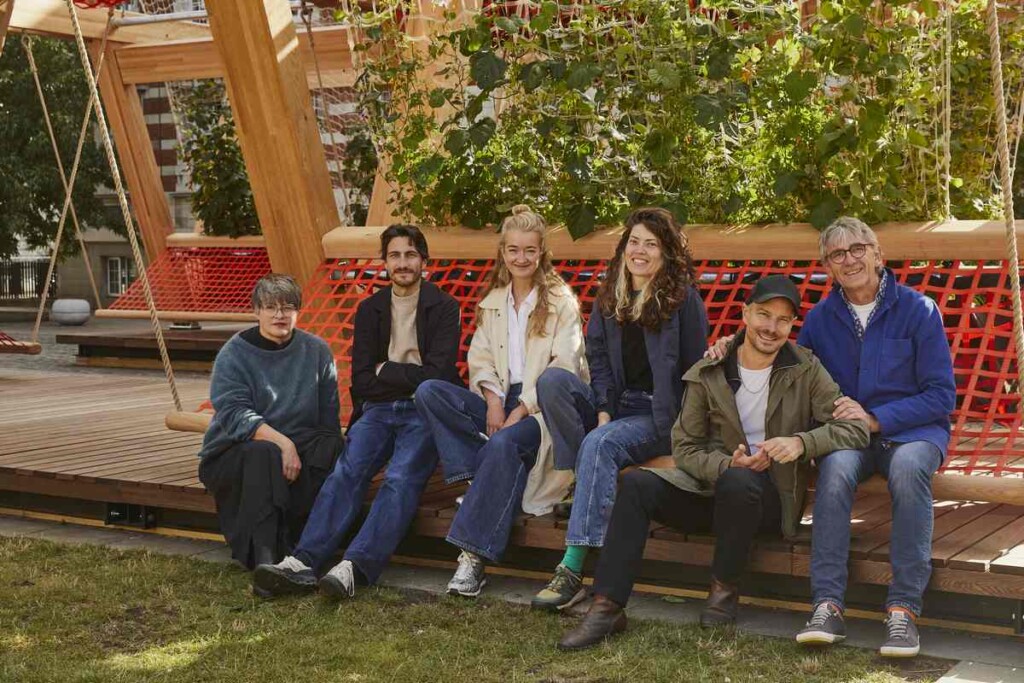 VERT at the Chelsea College of Arts – credit, Ed Reeve, courtesy of LDF, released
VERT at the Chelsea College of Arts – credit, Ed Reeve, courtesy of LDF, releasedNow at the London Design Festival, a nifty piece of “street furniture” allows for rapid urban greening with little effort and maximum impact.
“Vert” is a simple polygonal assembly of boards, nets, and ropes that will allow climbing plants to scale quickly and easily, bathing an area of exposed concrete in shade and moisture.
The idea behind Vert is to provide cities with solutions to combat the Urban Heat Island effect, a thermodynamic phenomenon in which cities heat up and retain heat faster and longer than more natural environments.
“This structure is, in a way, constructed like a street furniture,” Stefen Diez, Vert’s lead designer, told Reuters. “It’s like a shelf that you put onto a place or on the street so the cars can still pass underneath, the bicycle can go underneath and the people can still walk, but they can also sit and rest.”
One of the main drivers of the heat island phenomenon is that flat-faced buildings which easily absorb heat radiate it out onto other, flat, heat-intolerant buildings or black asphalt. In this way, the radiation from the Sun has no place to go, and continues to bounce around all day.
Go touch the side of a tree on a hot summer’s day and see how warm it is compared to sun-bathed concrete, or street paving compared to the soil in an open field. Vert’s plant arrangement helps combat this by adding moisture, shade, and uneven green surfaces for radiative heat to bounce onto.
 Designers Stefen and Carlotta in the Diez Office in Munich – Petr Krejci, released.
Designers Stefen and Carlotta in the Diez Office in Munich – Petr Krejci, released.Devised in a three-way collaboration between Stefan Diez’s industrial design studio Diez Office, the American Hardwood Export Council (AHEC), and urban greening specialists OMCºC, Vert was unveiled at the Chelsea College of Arts at the London Design Festival.
URBAN GREENING IDEAS: ‘Sponge’ Cities Combat Urban Flooding by Letting Nature Do the Work
The AHEC recommended Diez use boards of American red oak, as it grows fast, absorbs a lot of carbon throughout its lifetime, and has the appropriate mechanical properties for the structure.
 The VERT design team sitting on the structure’s swinging benches at the Chelsea Design College – credit, Ed Reeve, courtesy of LDF, released
The VERT design team sitting on the structure’s swinging benches at the Chelsea Design College – credit, Ed Reeve, courtesy of LDF, releasedVert’s triangular shape is fundamental to the structure’s performance, allowing for a robust construction that uses minimal materials while being capable of resisting wind from all angles and absorbing the weight of the plants.
ALSO CHECK OUT: Build Zigzag Patterns On Exterior Walls to Keep Buildings Cooler During Heat Waves
The triangle also lends itself to modularity, allowing for the system to be extended or to change in direction to suit different settings, without affecting the resistance of the structure. It also provides the perfect scaffolding to hang these nifty benches of netting.
WATCH the story below from Reuters…
SHARE This Good-Looking Piece Of Street Furniture With Your Urbanite Friends…
Source link

